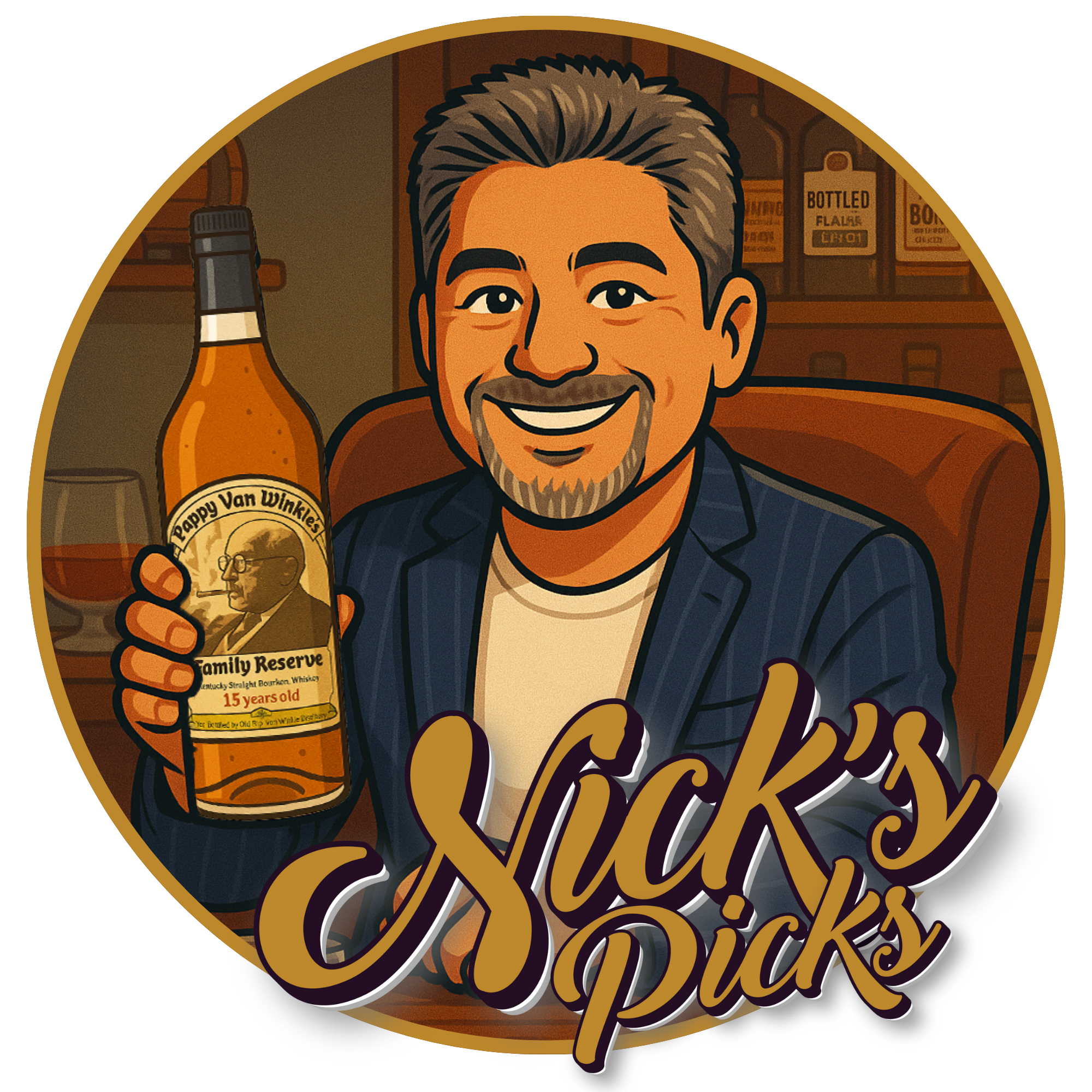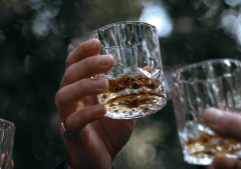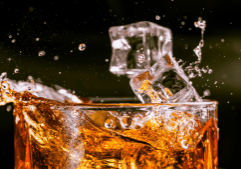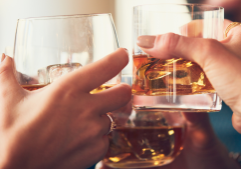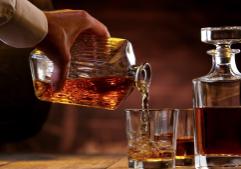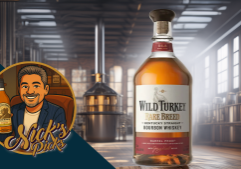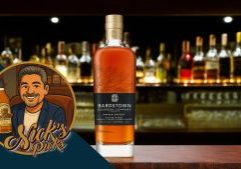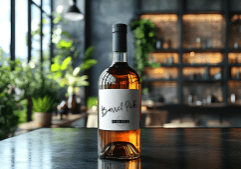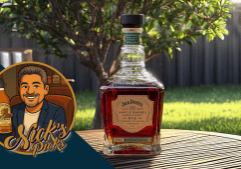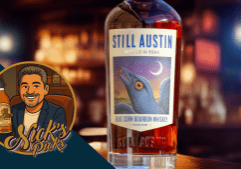If you’ve ever poured a glass of bourbon and thought, “Whoa, that’s strong!”—only to revisit it a few months later and find it smoother, richer, even more enjoyable—congratulations. Your palate just leveled up.
That evolution isn’t a fluke. It’s a process that every bourbon lover goes through, and it’s one of the most rewarding parts of this hobby.
Bourbon is a complex spirit—hundreds of chemical compounds interact to create the aromas and flavors we love. But the real magic isn’t just in the whiskey. It’s in you. Your senses, your memory, your patience, and your curiosity all play a role in how you taste bourbon—and how that taste evolves over time.
Let’s dive into the science (and art) of how your palate learns, changes, and sharpens with every pour.
It All Starts with the Burn
When you first start sipping bourbon, the alcohol can feel overwhelming. That heat you taste—that “burn”—comes from ethanol, which stimulates the same nerve endings that detect temperature and pain.
Your first instinct might be to think, This is too strong. But over time, something fascinating happens: your brain adapts. It starts to filter out the sting and focus on what’s underneath.
That’s when the flavors start to emerge—the caramel, the vanilla, the oak, the fruit, the spice. You’re not “getting used to it.” You’re training your brain to separate the signal from the noise.
Your Taste Buds Are Just the Beginning
Taste happens on your tongue, but flavor happens in your brain.
Your taste buds pick up the five basic flavors—sweet, salty, sour, bitter, and umami—but the real depth comes from your sense of smell. That’s why nosing a bourbon is as important as sipping it.
When you breathe in those aromas before the first sip, you’re activating your olfactory bulb, which connects directly to memory. That’s why a certain bourbon can remind you of your grandmother’s kitchen, an old campfire, or a pecan pie at Thanksgiving.
Your brain ties smell to emotion. That’s what makes tasting bourbon feel so personal—and so addictive.
Experience Changes Everything
The more bourbons you try, the more your brain builds a flavor map.
At first, you might just recognize general categories—“sweet,” “spicy,” “woody.” But as you taste more, you start to identify specifics: cinnamon versus nutmeg, vanilla bean versus marshmallow, dark cherry versus plum.
It’s pattern recognition at work. Your brain starts connecting what it’s tasting now with what it’s tasted before. That’s why keeping a tasting journal is such a game changer—it helps you track those connections and train your palate faster.
Environment Matters More Than You Think
Ever notice how a bourbon tastes different at a bar versus at home? Or how a bottle seems to change as it gets lower? That’s not your imagination—it’s science.
Temperature, humidity, glassware, and even your mood can affect how you perceive flavor. A hot, crowded bar amplifies ethanol vapors. A quiet night at home might let subtle notes shine.
Even oxygen exposure changes a bottle over time. A freshly opened bottle might feel sharp, while the same bourbon a few weeks later tastes softer and rounder. That’s oxidation working its slow magic.
The “Aha” Moments of a Developing Palate
Every bourbon drinker remembers a few key turning points—the moments when something clicks.
Maybe it’s the first time you taste banana bread in a pour of Old Forester. Or when you realize the difference between a wheated bourbon and a high-rye mash bill. Or maybe it’s when you go back to that same bottle you once thought was too harsh, and suddenly it’s your favorite.
Those are the milestones that mark your progress as a taster. They’re proof that your palate isn’t static—it’s evolving, sip by sip.
How to Train Your Palate Like a Pro
If you want to take your tasting game to the next level, here are a few ways to accelerate your bourbon education:
- Slow down. Don’t rush a pour. Let it breathe, swirl it, and nose it several times before sipping.
- Use a Glencairn glass. Its shape focuses aromas and enhances your sense of smell.
- Try flights. Compare bourbons side by side to identify differences in proof, mash bill, or age.
- Add a drop of water. It can open up hidden layers and help your palate focus on flavors over heat.
- Taste regularly. Like anything else, consistency builds skill.
- Write it down. Keep notes—not just what you taste, but how it makes you feel. Bourbon is as emotional as it is sensory.
Over time, you’ll notice your notes getting more detailed, your observations sharper, your confidence higher. That’s growth.
It’s Not About “Good” or “Bad”
Here’s the most important part: there’s no such thing as the “right” palate.
Tasting bourbon isn’t about scoring points or flexing your vocabulary. It’s about discovering what you enjoy. Maybe you love spicy high-rye mash bills. Maybe wheaters like Weller or Maker’s are your jam. Maybe you crave smoky, barrel-proof monsters—or delicate, dessert-like sippers.
Whatever you love is valid. The fun is in the exploration.
Final Pour
Bourbon isn’t a race to find the rarest bottle—it’s a journey to understand what speaks to you.
The longer you’re on that journey, the more you realize how much your palate evolves. What used to taste like “just whiskey” now tells a story. You start to notice the layers, the craftsmanship, the care that goes into every drop.
And that’s the beauty of it: bourbon changes you as much as you change it.
So pour something new tonight. Take your time. Smell it, sip it, and let it tell you what it wants to say. You might just find your next aha moment waiting in the glass.
Cheers,
—Nick

